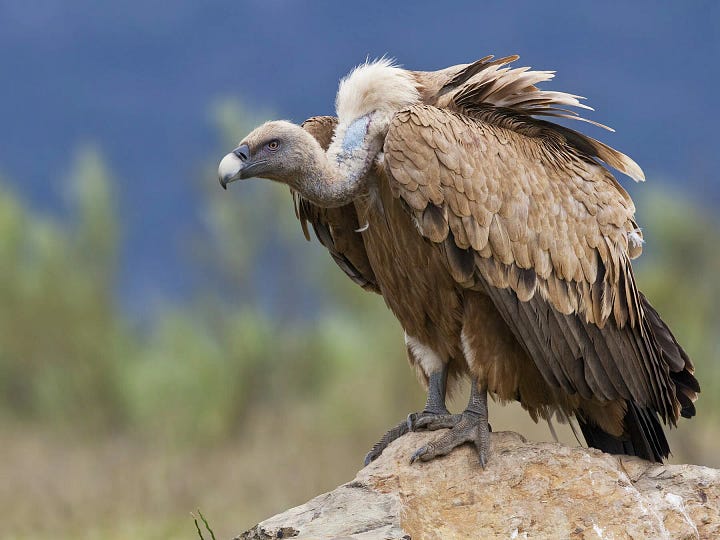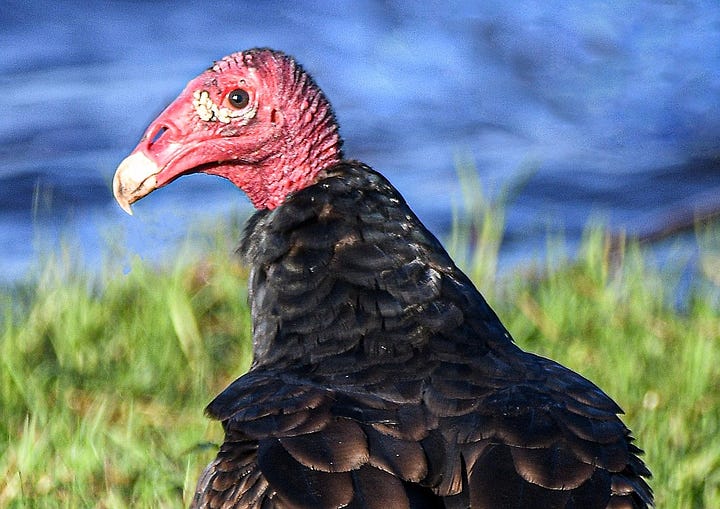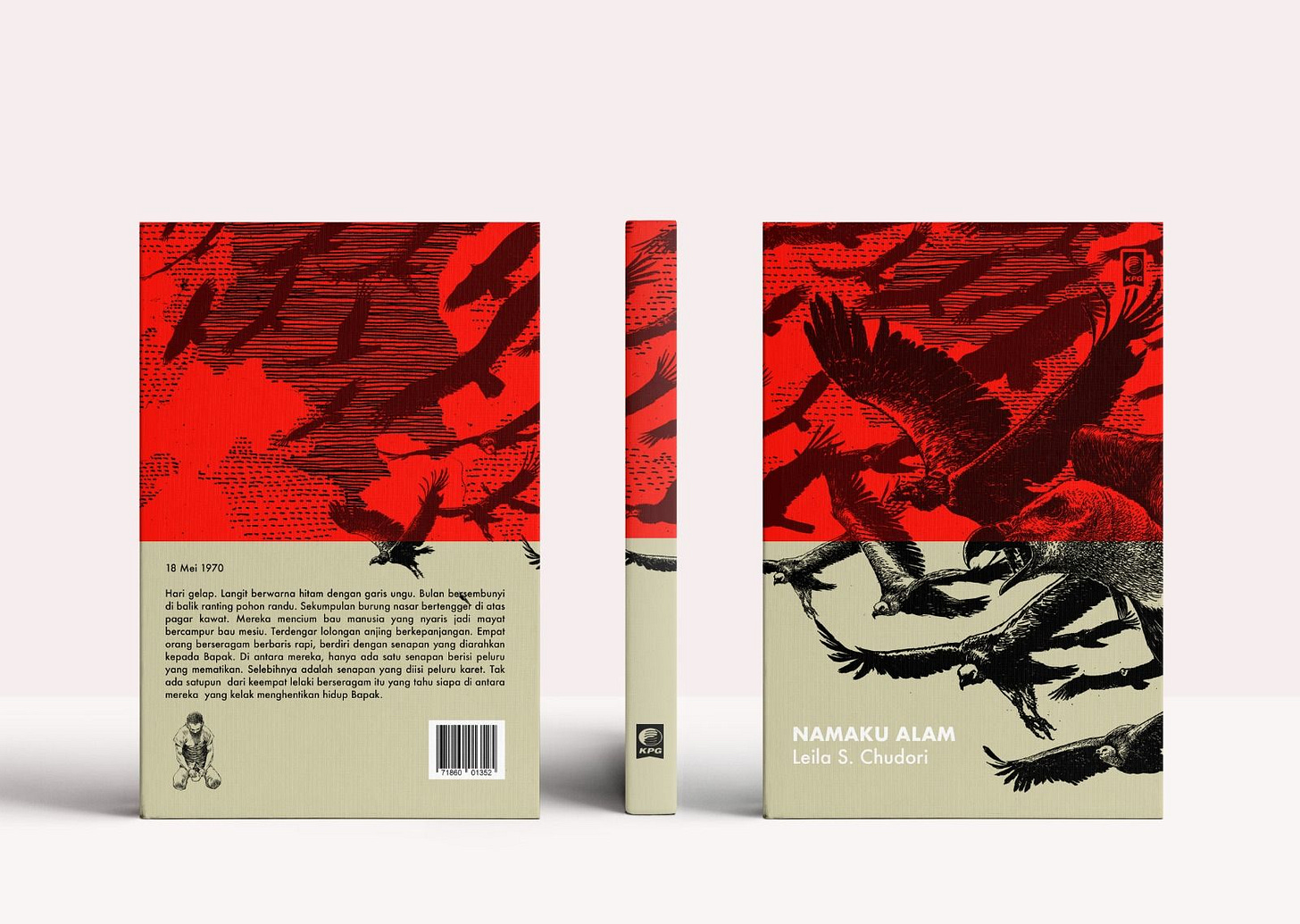Unveiling The Book Namaku Alam, The Vultures Birds, Symbolism of Alam Segara's Past
An essay based on the book Namaku Alam, written by Leila Chudori
Cover by Henry Stacy Marks (1829 - 1898) Study of a Vulture, watercolour over black chalk on paper
Countless minutes after I finished Leila S. Chudori's novel 'Namaku Alam', I couldn't forget the birds that stole the role of the main character, and they are called “The Vulture”. Subconsciously, I was so interested in the story behind these birds.
I surfed the internet to see what vultures looked like, because in fact, I myself could only imagine their shape based on what I read in the novel Namaku Alam. Before seeing its form on the internet, I imagined vultures to be small and jet black in color with a long, pointed beak (I imagined it a bit like a crow). However, after seeing its real form online, it was different from what I had imagined.
In particular, the first second I saw the vulture's form, and the second minute I heard the bird's voice, I immediately understood why Alam Segara made the vulture his muse when he was reunited with the pain of childhood.


Set between 1965 and the 1980s, Namaku Alam is a fiction-history story about a boy named Alam, who grows up deeply traumatized by the events of 1965, often referred to as the G30S or September 30th Movement. Alam grows up with a shadow of his past. We as readers are invited to grow up with Alam and his world. We are invited to witness the lives of Alam and his family who have to fight the bad stigma of the people around them.
The story of Segara Alam is not far from the vultures who are often present uninvited. Constantly following Alam, as if waiting for him to be eaten. For your information, if you search for 'Vultures' on Google, you will definitely find a sentence that says that vultures are carcass eating birds.
When looking at Alam, I think what he experienced as a child can be mirrored into the shadow of a living entity in the form of the vulture itself.
The main food of vultures (carrion) feels like it is very close to the one thing that exists in the life of Alam’s life. As I said earlier, perhaps, the bird is waiting for Alam to become its next meal.
Vultures, which are associated with carrion as well as “ecosystem cleaners”, are an important key to understanding why whenever Alam is reminded of the murkiness of his childhood, vultures seem to come to his in numbers, slowly devouring him without a trace. The birds haunt Alam not by erasing his memories, but by making them more vivid than ever. The memory continues to be present in Alam's life like a heartbeat that never stops until someone has the courage to execute it.
Despite Alam's desperate attempts to erase his memory, the birds have become his own shadow, following him around and watching him grow up. No matter where Alam went, his memories would still follow his footsteps.
Since childhood, every night, Alam has been possessed by dreams of a faceless man he often refers to as Father. Since childhood, Alam has never remembered his own father's face. Although he has a photographic memory, the only thing he can't remember is his father's face.
Alam Segara's father was an executed victim of the 1965 G30S. Throughout Alam's life, we witness the hardship and torment of his family's life as they desperately try to survive the collapse of the country's judiciary.
The fear experienced by Alam's family continued to spread far into Alam's teenage years. Actually, it's not just Alam. Alam's older sisters, Bulan, Kenanga, and of course, Ibu (mom), were also victims of the dark massacres of that time. By massacre I don't always mean physically, but psychologically and mentally.
Even the “massacre” continues to grow bigger and heavier as they get older.
The presence of the massacre is not only in the form of a memory that is difficult to erase. But also in human form. Alam's family has been haunted by fear all their lives. Relatives, classmates, teachers, and other people they don't know who to call have also become tangible manifestations of their family's massacre. Alam and his family lived under discrimination and injustice, including being object of conversation by relatives during family gatherings.
While in today's world we hear the deadly phrases “You're fat now, go on a diet” at family gatherings, Alam received far different comments than we do.
“Son of a traitor” was the taunt that entered his ears at every big family gathering.
The term “son of a traitor” is familiar to Alam. You could say that Alam ate those words more often than he ate rice.
As Alam grew up, the decisions he made, the path and the actions he took were all mirrored from the past. Everything repeats like a radio tape that can't stop. Fear continues to take various forms that cannot be described in words.
However, it is clear that the vultures will continue to symbolize the shadows of Alam's misery throughout his life.
If Alam could leave and fly free, the birds would fly with him.
If Alam tried to returned to his home in Percetakan Negara, the birds will be lounging right on top of his fence.
If Alam tried to hide behind his bedroom door, one of the vultures would wait outside the window. The rest would hide under the bed or in the closet, waiting for him to scream and go back into hiding.
If Alam tried to run, the birds would clump together to hold his back, reuniting him with the fear he had been avoiding.
The shadow of death will continue to haunt Alam Segara and his world.
But the question is, how long will it take?
As of now, there is no official English translation of Leila S. Chudori's novel Namaku Alam. However, some of her previous works have been translated into English.





